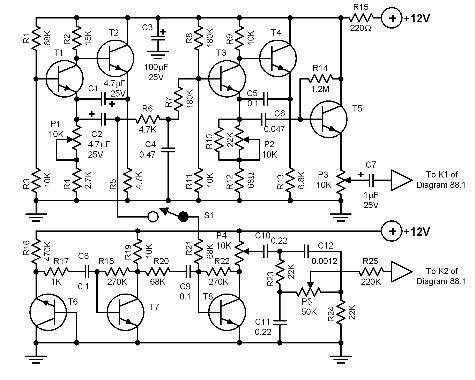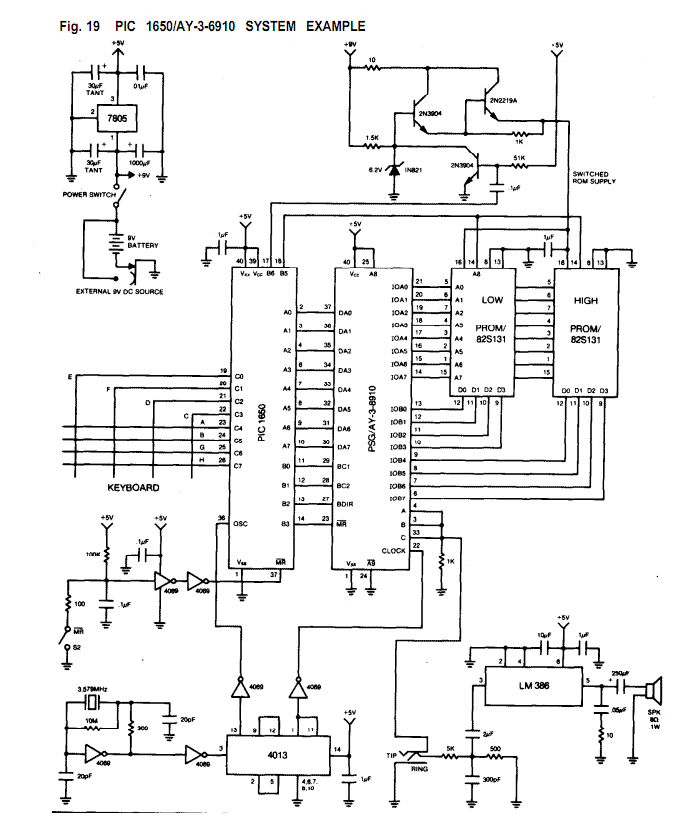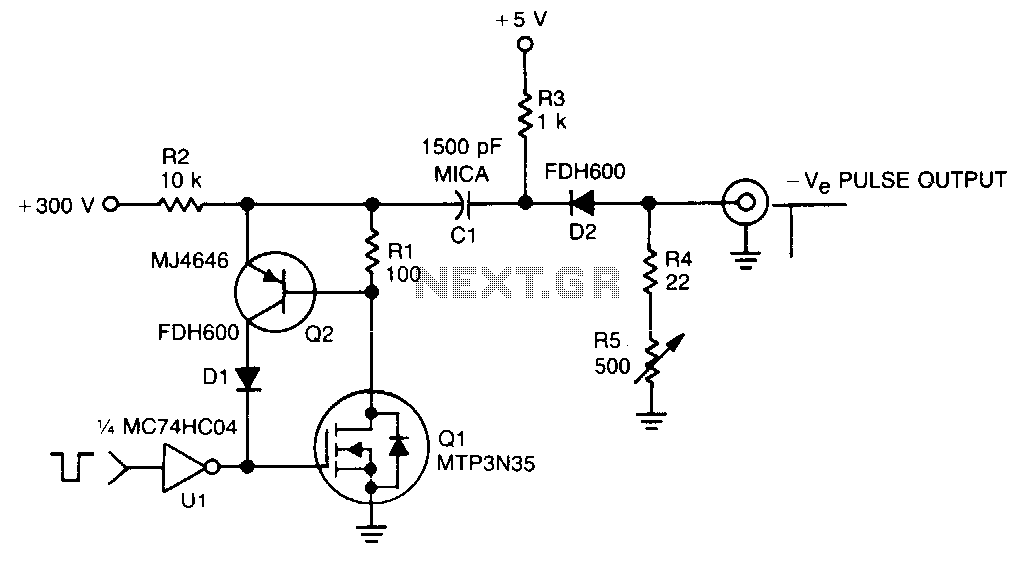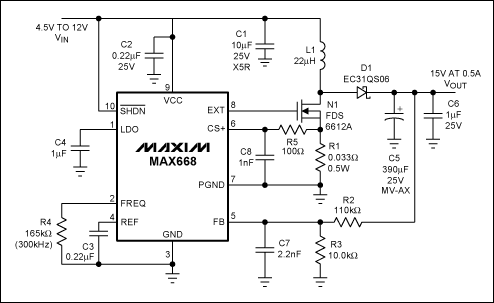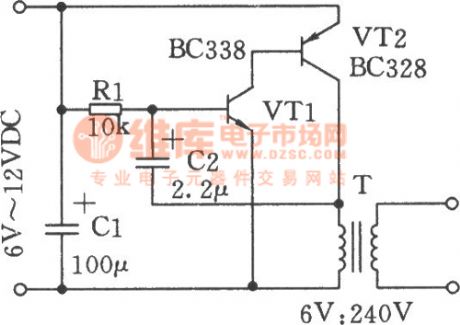
WIDE RANGE STAIRCASE GENERATOR

The circuit features high input impedance and low output impedance, which minimizes voltage droop between pulses. A staircase waveform is generated by the combination of diode D2 and capacitor C2, which is bootstrapped on the output to ensure equal amplitude for each step. The specified circuit values produce 10 steps with a 12-V input pulse.
The circuit operates by utilizing a high input impedance to prevent loading effects that could distort the input signal. This characteristic is essential when interfacing with sensitive signal sources. The low output impedance ensures that the output can drive subsequent stages without significant voltage drop, maintaining signal integrity.
The staircase waveform is created through a charge and discharge cycle facilitated by diode D2 and capacitor C2. During the charging phase, the capacitor accumulates charge, and the diode allows current to flow in one direction, effectively boosting the voltage level at the output. The bootstrapping technique used here helps maintain a consistent output amplitude across each step of the staircase, which is crucial for applications requiring precise voltage levels.
The circuit's design is optimized for a 12-V input pulse, enabling it to generate 10 distinct voltage steps. Each step corresponds to a specific voltage level, allowing for controlled output that can be utilized in various applications, such as analog-to-digital conversion or signal processing. The values of the components used in the circuit are critical for achieving the desired performance and should be selected based on the specific requirements of the application.
In summary, this circuit provides a reliable method for generating a staircase waveform with minimal voltage droop and consistent output levels, making it suitable for various electronic applications requiring precise voltage control.Has high input impedance und low output impedance, to reduce droop in output voltage between pulses. Staircase is generated by pump D2-C2, which is boostrapped on output to maintain equal amplitude on each step. Circuit values shown give 10 steps with 12-V input pulse. -"Transistor Manual, " Seventh Edition, General Electric Co. , 1964, p 345. 🔗 External reference
The circuit operates by utilizing a high input impedance to prevent loading effects that could distort the input signal. This characteristic is essential when interfacing with sensitive signal sources. The low output impedance ensures that the output can drive subsequent stages without significant voltage drop, maintaining signal integrity.
The staircase waveform is created through a charge and discharge cycle facilitated by diode D2 and capacitor C2. During the charging phase, the capacitor accumulates charge, and the diode allows current to flow in one direction, effectively boosting the voltage level at the output. The bootstrapping technique used here helps maintain a consistent output amplitude across each step of the staircase, which is crucial for applications requiring precise voltage levels.
The circuit's design is optimized for a 12-V input pulse, enabling it to generate 10 distinct voltage steps. Each step corresponds to a specific voltage level, allowing for controlled output that can be utilized in various applications, such as analog-to-digital conversion or signal processing. The values of the components used in the circuit are critical for achieving the desired performance and should be selected based on the specific requirements of the application.
In summary, this circuit provides a reliable method for generating a staircase waveform with minimal voltage droop and consistent output levels, making it suitable for various electronic applications requiring precise voltage control.Has high input impedance und low output impedance, to reduce droop in output voltage between pulses. Staircase is generated by pump D2-C2, which is boostrapped on output to maintain equal amplitude on each step. Circuit values shown give 10 steps with 12-V input pulse. -"Transistor Manual, " Seventh Edition, General Electric Co. , 1964, p 345. 🔗 External reference
